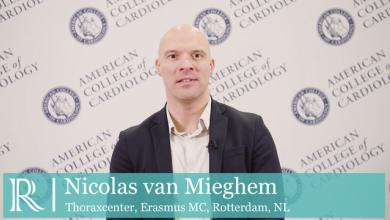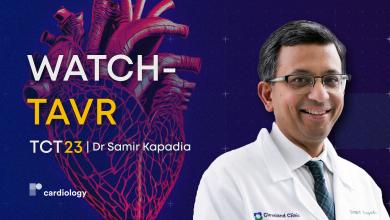Search results
Author(s):
Laurent Fiorina
Added:
18 hours ago
EHRA 24 - In this short interview, we are joined by Dr Laurent Fiorina (Cardiovascular Institute Paris-Sud (ICPS), FR) joins us to discuss the findings from a clinical investigation into the EKG Diagnostic Performance of the Apple Watch Augmented With an AI Algorithm (NCT05045456).This observational, prospective clinical trial aims to investigate the performance of an artificial intelligence…
View more
Author(s):
Michael R Massoomi
,
Eileen M Handberg
Added:
3 years ago
Today is an age of rapid digital integration. A decade ago, technological advancement was represented by a bulky desktop computer. With the constant evolution of microprocessors and sophistication of programming, the capacity of the mainframe has been surpassed and miniaturised, so that the pinnacle of technology and innovation is quite literally in the palm of our hands. This opens a world of…
View more
Author(s):
Andreas Seitz
,
Johanna McChord
,
Raffi Bekeredjian
,
et al
Added:
2 years ago
Author(s):
Nicolas M Van Mieghem
Added:
5 years ago
An analysis of the late-breaking trials from ACC 2019 presented by Dr Nicolas van Mieghem (Erasmus MC, Rotterdam, NL).
Filmed on site at ACC 2019 by Radcliffe Cardiology
Topics:
00:19 - Apple Heart Study
01:50 - PARTNER 3 Trial
03:44 - CoreValve Low Risk Study
06:26 - STS/TVT Registry Sub-Analysis
07:32 - COAPT Quality of Life Analysis
07:43 - COAPT Echo Sub-Analysis
08:14 - AUGUSTUS…
View more
TCT 23: WATCH-TAVR
Author(s):
Samir R Kapadia
Added:
5 months ago
Video
Author(s):
Iskren Garvanski
,
Iana Simova
,
Lazar Angelkov
,
et al
Added:
3 years ago
AF is the most common sustained arrhythmia in clinical routine, and is associated with cardiovascular and cerebrovascular complications, dementia and mortality.1 Pulmonary vein isolation (PVI) in patients with symptomatic AF has become a well-established treatment option.2,3 High acute success rates are achievable, but durable efficacy of previously successful PVIs for AF still remains a…
View more
Author(s):
Heather Currie
,
Christine Williams
Added:
3 years ago
Cardiovascular disease (CVD) is the leading cause of death in both men and women, yet the extent of the problem in women is frequently underestimated and, compared with men, women are less likely to be offered interventions, are less likely to be represented in clinical trials and have a worse prognosis. This article aims to examine the extent of the problem of CVD in women, summarise the…
View more
Author(s):
Miriam Reiter
,
Tobias Reichlin
,
Raphael Twerenbold
,
et al
Added:
3 years ago
Acute myocardial infarction (AMI) is a major cause of morbidity and mortality worldwide. Accordingly, prompt identification of patients with AMI is critical, as established therapies exist that are of proven benefit.1,2 More than 15 million patients per year present to emergency departments with symptoms compatible with acute myocardial ischaemia in the US and Europe; only 20–30%, however, are…
View more
Current Recommendations for Interpretation of the Highly Sensitive Troponin T Assay for Diagnostic,…
Author(s):
Evangelos Giannitsis
,
Hugo A Katus
Added:
3 years ago
Article
Author(s):
Andrea Barison
,
Luigi Emilio Pastormerlo
,
Alberto Giannoni
Added:
3 years ago
Among the various cardiovascular diseases, non-ischaemic dilated cardiomyopathy (DCM) represents a major cause of morbidity and mortality.1 DCM is characterised by the presence of left ventricular dilatation and systolic dysfunction in the absence of coronary artery disease or abnormal loading conditions (hypertension, valvular disease).2 It originates from several aetiologies and includes…
View more
















